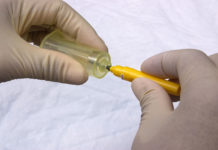
Study shows the green filter has no effect on children without dyslexia
A solution as simple as green filters on computer screens could help dyslexic children learn better.
According to a new study that made this conclusion, the filters had no effect on age-matched children without dyslexia.
Coloured filters for the treatment of learning disabilities were first patented in 1983. They were also designed for use by children with autism and attention deficit hyperactivity disorder (ADHD).
“However, studies of their efficacy were methodologically flawed. We used a highly rigorous methodology for the first time,” said Milena Razuk, who performed the experiment during a research internship at Paris Diderot University in France.
Eighteen children with dyslexia and 18 without dyslexia were selected for the study at Robert Debre Hospital in Paris. The researchers decided to use yellow and green filters in the experiment.
(DYSLEXIC KIDS) READ FASTEST WITH THE GREEN FILTER, FIXING THEIR GAZE ON GROUPS OF WORDS FOR 500 THOUSANDTHS OF A SECOND, COMPARED WITH 600 THOUSANDTHS OF A SECOND USING THE YELLOW FILTER OR NO FILTER
Twelve colours are available, but we chose two because a very long test would be too demanding for the volunteers,” said Jose Angelo Barela, a professor at Sao Paulo State University in Brazil.
All 36 children were asked to read passages from children’s books suited to their reading age. The texts were displayed on a computer screen with a yellow filter, a green filter, and no filter.
Their eye movements were recorded with an eye-tracking device certified for medical purposes, consisting of goggles fitted with cameras that record the movements of each eye independently via infrared light signals.
“A child with dyslexia has to fix his or her gaze on the words for a longer time to understand a text. Reading speed is slower as a result,” Barela said.
While the filters did not affect reading speed for the children without dyslexia, there was a statistically significant difference for children with dyslexia.
The latter read fastest with the green filter, fixing their gaze on groups of words for 500 thousandths of a second, compared with 600 thousandths of a second using the yellow filter or no filter.
Researchers stress that they did not evaluate whether the use of a green filter improved comprehension.
The causes of dyslexia are unknown. In addition to reading difficulties, other deficits have been found to be associated with the disorder, including impaired sensorimotor integration.
“It’s as if some source of noise disturbs the brain’s communication with the rest of the body,” Razuk said.
Extensive testing has shown that neither impaired eyesight nor intellectual deficiency is part of the condition.
The improvement in reading time with the green filter might be due to changes in the visual stimuli available for central nervous system processing.











